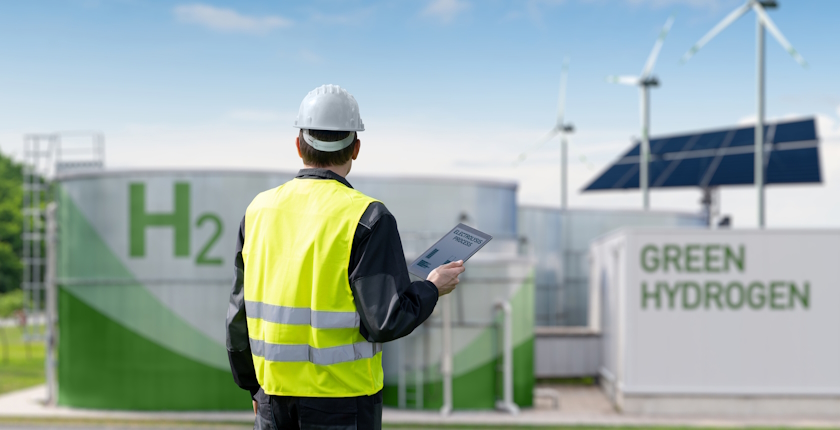
Photo: iStock
The European Commission is providing some EUR 720 million in subsidies to seven green hydrogen projects selected in the first auction under the European Hydrogen Bank initiative, which aims to facilitate domestic production of renewable hydrogen in the European Union. The hydrogen produced by the selected bidders will be used in sectors such as steel, chemicals, maritime transport, and fertilizers, helping to decarbonize European industry, the commission said.
The winning projects, which were selected among a total of 132 bids, will produce renewable hydrogen in four European countries – Portugal, Spain, Norway and Finland. They will receive subsidies to bridge the price difference between production costs and the market price for hydrogen, which is currently driven by non-renewable producers, according to a press release from the commission.
The awarded green hydrogen projects plan to produce a total of 1.58 million tons of renewable hydrogen over ten years, avoiding more than 10 million tons of CO2 emissions, the commission noted.
The seven winning bidders should produce 1.58 million tons of green hydrogen over 10 years
Kadri Simson, the European Commissioner for Energy, said the results of the first auction of the European Hydrogen Bank prove the high interest from European industry to produce and use hydrogen.
“The selected projects will help us to deliver the EU’s 2030 energy and climate targets, while creating new opportunities for green jobs and skills. The second hydrogen bank auction later this year is another exciting opportunity for European industry and I hope to see similar interest then,” she stated.
The European Commission plans a second auction later this year
The bidders in the first auction submitted offers of between EUR 0.37 and EUR 0.48 per kilogram of renewable hydrogen produced, and the subsidies per project range from EUR 8 million to EUR 245 million. The subsidies will be funded from the EU Emissions Trading System (EU ETS) revenues.
The largest awarded project is MP2X in Sines, Portugal, which aims to produce 511,000 tons of renewable hydrogen over ten years. The project is being implemented by MadoquaPower2X, a consortium comprising Madoqua Renewables, Power2X and Copenhagen Infrastructure Partners (CIP).
The largest awarded projects are in Portugal and Spain
The second-biggest project is Catalina in the province of Teruel in northeastern Spain, which targets an output of 480,000 tons of green hydrogen. The subsidy is awarded to Renato Ptx Holdco, which is developing the project.
The agreements are expected to be signed by November 2024, and the selected projects will have to start producing renewable hydrogen within five years.
EU-approved national subsidies for more green hydrogen projects
In Germany, the highest-ranked domestic projects that did not qualify for the EU-level support will be offered EUR 350 million in national funding under the so-called auctions-as-a-service scheme.
The European Commission, which approved the funding under the EU’s state aid rules, said that the mechanism is part of the Hydrogen Bank Initiative and that it is open to all member states. It enables individual countries to benefit from the EU-level auction platform and award national funding to additional projects, it said.


















Be the first one to comment on this article.